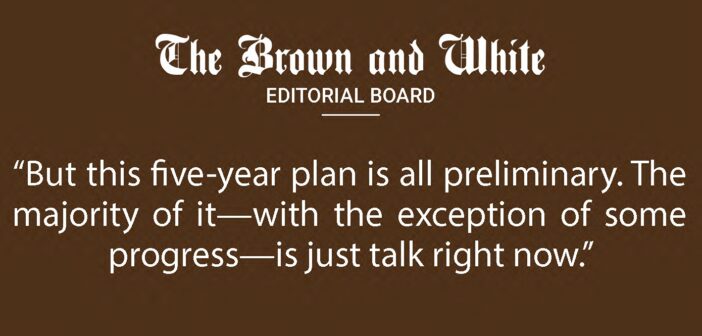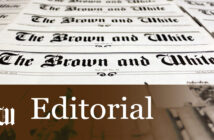“Diverse” and “inclusive” haven’t historically been words adequately embraced by everyone at Lehigh.
From the university’s founding two centuries ago to today, this campus has been anything but a haven for minorities.
Lehigh not only lacks minority student represention, but also does not foster a safe place that empowers them to the same level as the privileged majority—cis-gendered, straight, white students.
How could we ever highlight the tightly bound “Lehigh community” when students don’t feel like they belong here?
Low and behold, Lehigh released its Diversity, Inclusion and Equity Plan to the campus community on Sept. 8.
The plan maps out an extensive number of goals to achieve “an unequivocal commitment to promoting diversity, inclusion and equity” over the next five years.
The main priorities include: enhancing the culture, improving institutional infrastructure, diversifying faculty and staff and expanding student access and support.
The plan lists detailed goals under each priority and the progress that has been made thus far.
After numerous years of enduring a campus deprived of diversity, inclusivity and equity, it is somewhat rejuvinating to see a fully fleshed-out plan. Furthermore, we respect that the plan urges students, faculty and staff to help in achieving such goals.
But this five-year plan is all preliminary. The majority of it—with the exception of some progress—is just talk right now.
We’re far past the need for words of support including how “everyone should feel safe here” and how our campus “should be an inclusive environment.”
What about turning the should into will or even is? The actions taken will mean much more beyond the words spoken.
In terms of action, there’s undoubtedly a need for greater representation across students, faculty and staff. Yet, with the plan’s emphasis of recruiting a diverse student body to Lehigh, what will be done for those that are already here?
Successfully enrolling minority students is one thing. The actions taken to have them comfortably stay here is another — for instance, implementing programs that will support, guide and empower them.
Such programs exist on campus, provided by both the university and the student body. Nonetheless, the majority of the active organizations are student-run. Full-time students are carrying the weight of running these programs on top of other extracurricular and academic responsibilities.
While there are several programs run by the university, it’s essential to add more and further develop the existing programs – especially with a plan to increase the number of underrepresented students over the next five years.
After the extensive history of discrimination and exclusivity at Lehigh, there’s hope that this plan was not for the sake of everyone pushing for change. We hope that this is what Lehigh strives for— not because of pressure, but because of the inner desire to change.
Come 2026, these planned goals must be carried out through action, instead of being left in the dark a few years down the road.
Lehigh won’t have a tightly bound community until actions are taken.






Comment policy
Comments posted to The Brown and White website are reviewed by a moderator before being approved. Incendiary speech or harassing language, including comments targeted at individuals, may be deemed unacceptable and not published. Spam and other soliciting will also be declined.
The Brown and White also reserves the right to not publish entirely anonymous comments.
1 Comment
Your sighting of isolated incidents are not representative of the University as a whole. The right of association is a protected right in America and is the basis that allows places like UMOJO house or fraternities/sororities or LBGT+ houses to exist.
Lehigh has transitioned from an all male bastion founded to develop leaders for industrial America to a coeducational liberal Arts school.
In the last 30 years it has successfully transitioned to minimize its historically distinctive strengths in order to meld into the liberal arts educational arena while increasing its diversity & inclusion.
It has gradually transitioned itself at the expense of its unique identity while also reducing its reputation among the elite national Universities in US News Rankings dropping from #32 to #49.
Suggest the B&W editorial board proceed with a less hostile attitude & agenda to insure preservation of individual freedom in your pursuit of equality for Lehigh.